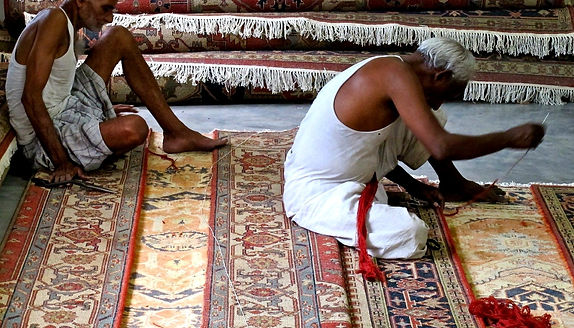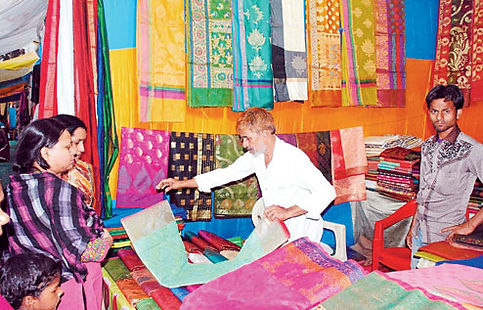
Banarasi Saree
Banarasi Saree is an Indian woman's coveted possession. For a
long time Banarasi Saree has been an important part of the
Indian bride wardrobe and rarely fails to flatter a woman, making
her feel delicate and feminine. The Banarasi sari speaks volumes
of the genius of the traditional weaver. The Banarasi saris
became more popular during the Mughal era and the sari
weaving art reached its zenith. It was during this period when
Sari weaving saw the amalgamation of Indian designs and
Persian motifs.
The Banarasi sari comes mainly in four different varieties. They
are pure silk (katan); organza (kora) with zari and silk; georgette,
and shattir. Sari weaving is kind of a cottage industry for millions
of people around Varanasi. Most of the silk for the Banarasi saris
comes from south India, mainly Bangalore. The Sari weavers
weave the basic texture of the sari on the power loom. In weaving
the warp, the weavers create the base, which runs into 24 to 26
meters. In an ideal Banarasi Sari there are around 5600 thread
wires with 45-inch width.
The weaving of Banarasi sari involves teamwork. Ideally three people are engaged in making the Sari. One weaves, the other works at the revolving ring to create bundles. At this point, another important process begins. This is related to designing the motifs. There are several traditional artists in Varanasi who, create wonderful designs for Saris. To create design boards, the artist first sketches on graph paper with color concepts. Selection of the final design follows creation of punch cards.
For one design of Banarasi sari, one requires hundreds of perforated cards to execute the idea. The prepared perforated cards are knitted with different threads and colors on the loom and then they are paddled in a systematic manner so that the main weaving picks up the right colors and pattern. The normal Banarasi Sari takes around 15 days to one month and sometimes more time to finish. However, this is not a hard and fast rule as all depends on the complexity of designs and patterns to be produced on the sari.
Handicrafts of Varanasi
Varanasi has, since times immemorial, been hailed as a leading center for some of the finest Indian handicrafts. The most renowned craft of Varanasi city is silk weaving. 'Banarasi Sarees', produced by local craftsman are among the most preferred, not only in India but also all over the world. Besides the famous Benarasi Sari, brassware, copperware, ivory work, glass bangles, wood, stone and clay toys and exquisite gold jewellery are some of the other crafts Varanasi city is famous for. Among the other shopping attractions of Varanasi and surrounding areas are the Bhadohi Carpets and musical instruments.
Banarasi Carpets
Varanasi and its neighboring areas are well known
for carpet making. The Varanasi-Bhadohi-Mirzapur
belt in Uttar Pradesh produces maximum number
of carpets in the country. The carpets produced in
Varanasi region are famous for the excellence in
quality and design. Every carpet that is woven here
has a distinctive grace and unmatched style that
speak volumes about the carpet weaving tradition
of Varanasi and its surrounding areas. The stylish
and quality of the carpets also proves the genius of
the traditional carpet weavers of Varanasi region.
A majority of carpets exported from India come
from Varanasi and its neighboring areas. This
carpet belt specializes in traditional Indian woolen
carpets and Durries. The Bhadohi carpets match
the gracefulness of carpet weaving in any part of
the world and are distinguished for their beauty
and elegance and are worth buying. For carpet
lovers the Varanasi-Bhadohi-Mirzapur belt offers
great shopping opportunities as the carpets are not only cheaper yet stylish and fashion oriented. The Varanasi-Bhadohi-Mirzapur belt also produces hand tufted, Indo-Tibetan and low, medium and high Knotted Carpet.




